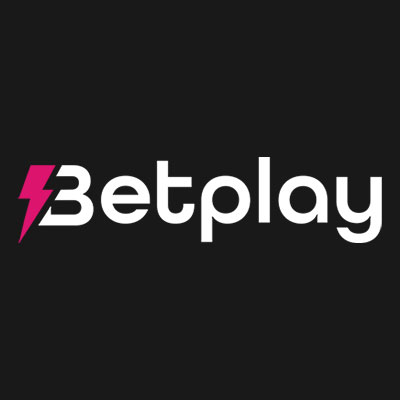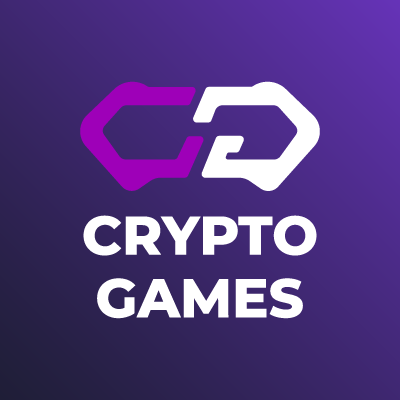History & Progress of Crypto Mining
Cryptocurrency mining began with Bitcoin in 2009, when the process was incredibly simple. At that time, anyone could mine coins using a basic CPU on a personal laptop. The difficulty was low, energy use minimal, and the reward was substantial — 50 BTC per block. Since Bitcoin held very little value back then, it was easy to accumulate hundreds or even thousands of coins with almost no upfront cost.
As Bitcoin gained popularity and value, mining became more competitive. Around 2011, people started using GPUs, which were far more efficient than CPUs at solving the complex mathematical problems required for mining. This shift marked the first real investment phase in crypto mining. GPU miners dominated until about 2013, when ASICs (Application-Specific Integrated Circuits) were introduced. These machines were custom-built for mining, vastly outperforming GPUs in speed and energy efficiency.
Since then, mining has grown into a full-blown industry. Mining farms around the world use thousands of ASICs in specially cooled facilities. The network’s total hash rate has increased exponentially, and difficulty has followed. As a result, individual or solo mining became largely impractical. Most miners today join mining pools, combining their computing power to increase the chance of earning block rewards.
By 2024–2025, mining profitability depends heavily on factors like electricity costs, hardware efficiency, and Bitcoin’s market price. The reward per block has dropped due to periodic "halvings" — events that cut the reward in half roughly every four years. In 2024, the block reward decreased to 3.125 BTC, meaning less payout for the same amount of computational work. Unless you have access to ultra-cheap electricity or operate at scale, profit margins are slim.
⚖️ Profitability: Then vs. Now
|
Year |
Reward/Block |
Mining Gear |
Profitability |
|
2009–2011 |
50 BTC |
CPU |
Very high (easy with low power) |
|
2013–2016 |
25 BTC |
GPUs → ASICs |
High (early adopters thrived) |
|
2017–2020 |
12.5 → 6.25 |
ASICs only |
Moderate (more competitive) |
|
2021–2025 |
6.25 → 3.125 |
High-end ASICs |
Low to moderate (very tight ROI) |
How Does Crypto Mining Works?
Crypto mining is the process of validating transactions and adding them to a blockchain ledger using powerful computers. Here's how it works:
-
Transactions are bundled into blocks.
-
Miners compete to solve complex mathematical problems (called proof of work).
-
The first miner to solve it adds the block to the blockchain and receives a reward (e.g., Bitcoin).
-
This process ensures the network is secure, decentralized, and trustless (no central authority needed).
Mining requires hardware (ASICs or GPUs), software, a wallet, and a stable internet connection.
Top Coins to Mine & Their Miners
Here are the top user-friendly and profitable mining devices for major mineable coins like BTC, DOGE, LTC, XMR (Monero), BCH, ZEC, ETC, and DASH, along with current pricing and purchase options:
💰 Bitcoin (BTC)
Bitmain Antminer S19 XP Hydro – ~512 TH/s, 5 300 W, liquid-cooled; ~$8 332 from Empire Miners. The Bitmain Antminer S19 XP Hydro (255 TH/s) is an excellent choice for mining BTC due to its high efficiency and superior hash rate. As a hydro-cooled miner, it offers better heat dissipation, allowing for sustained peak performance with lower energy waste. With an efficiency of around 20 J/TH, it outperforms many air-cooled models, reducing electricity costs—a critical factor in BTC mining profitability.
Additionally, its high hash rate (255 TH/s) ensures strong competitiveness in Bitcoin’s mining difficulty environment. The hydro-cooling system also enhances longevity, making it a reliable long-term investment for large-scale mining operations. When paired with low-cost electricity, the S19 XP Hydro can deliver exceptional returns, making it one of the best ASICs for BTC mining today.
The Bitmain Antminer S19 XP Hydro can be purchased from several trusted sources, including:
-
Official Bitmain Website (shop.bitmain.com) – The most reliable source for new units, with warranty support.
-
Authorized Distributors – Companies like Coin Mining Central, Miner Bros, and Wattum often carry Bitmain products.
-
Secondary Markets – Platforms like eBay, Alibaba, and ASIC Marketplaces (e.g., Kaboomracks, Compass Mining) may offer both new and used units.
DOGE & LTC (Scrypt algorithm)
Bitmain Antminer L9 (16–17 GH/s) – ~16 GH/s, ~3 360 W consumption, priced from $4 350–8 750 depending on batch/vendor. The Bitmain Antminer L9 (16–17 GH/s) is a strong choice for mining DOGE and LTC because it uses the Scrypt algorithm, which is the same algorithm both coins rely on. The L9 offers high efficiency with a competitive hash rate, making it well-suited for mining these cryptocurrencies profitably, especially when electricity costs are low. Its optimized power consumption helps maximize returns, particularly in large-scale mining operations.
Additionally, DOGE and LTC are often merge-mined, meaning miners can earn both coins simultaneously when mining on Scrypt-based pools. The Antminer L9’s performance and reliability make it a solid option for miners looking to capitalize on these coins, especially in favorable market conditions. Its durability and Bitmain’s reputation for quality hardware further enhance its appeal for long-term mining operations.
The Bitmain Antminer L9 (16–17 GH/s) can be purchased from the following sources:
1. Official & Authorized Sellers
-
Bitmain’s Website (shop.bitmain.com) – Occasionally lists new and refurbished units.
-
Authorized Distributors – Companies like Coin Mining Central, Wattum, and Mining Cave may carry the L9.
2. Secondary Markets (Used/Refurbished)
-
eBay – Check seller ratings for legitimacy.
-
Alibaba – Some suppliers offer bulk purchases.
-
ASIC Miner Marketplaces – Sites like Kaboomracks, ASICminers for Sale, or Compass Mining may have listings.
3. Mining Hardware Resellers
-
Crypto Mining Brokers – Some specialize in sourcing older models like the L9.
⚠️ Warning: Since the L9 is an older model, availability may be limited. Always verify seller reputation, check for warranty coverage, and test used units before purchasing. Buying from authorized dealers is safest to avoid scams.
Monero (XMR, RandomX algorithm)
Bitmain Antminer X5 (212 KH/s) – 1 350 W, costs between €1 880–3 200, decent XMR returns ($6–7/day gross). The Bitmain Antminer X5 (212 KH/s) is one of the first ASICs specifically built to mine Monero (XMR) using the RandomX algorithm, which was traditionally resistant to ASICs. Its high hashrate of 212 KH/s paired with a relatively low power draw (~1,350W) makes it far more efficient and profitable than CPU-based setups, which were previously the standard for Monero mining. This leap in performance significantly boosts daily earnings compared to even the best consumer-grade CPUs.
Priced at around $2,800 to $3,500 USD, the X5 can be purchased from Bitmain’s official site, ASIC marketplaces like AsicMinerMarket, CoinMiningCentral, or through vetted sellers on eBay and Alibaba. While its ASIC status goes against Monero’s original anti-ASIC ethos, it currently offers one of the best returns for dedicated XMR miners.
Other Mineable Coins
Bitcoin Cash (BCH), Zcash (ZEC), Ethereum Classic (ETC), Dash (DASH): These use SHA-256 for BCH/ZEC or Equihash (ZEC) and Ethash (ETC). The same BTC ASICs (e.g. Antminer S19) can mine BCH/ZEC but aren't efficient for Equihash/Ethash. Instead:
-
BCH/ZEC: Use SHA-256 ASICs like Antminer S19 series. SHA-256 ASICs are specifically built to mine cryptocurrencies like Bitcoin (BTC) and Bitcoin Cash (BCH). They offer high hash rates and energy efficiency compared to GPUs or CPUs. These devices are optimized solely for the SHA-256 algorithm, making them far more profitable and reliable for mining BTC-related coins over the long term. Their performance allows for steady earnings in large mining pools.
Modern SHA-256 ASIC miners, like the Bitmain Antminer S19 series, typically cost between $1,500 and $8,500 USD, depending on model, efficiency, and market demand.
-
ETC: Best mined with high-end GPUs via Ethash. To mine Ethereum Classic using the Etchash algorithm, high-end GPUs like the NVIDIA RTX 4090 (~135 MH/s) and RTX 4080 (~100 MH/s) are among the most powerful and efficient, though they come at a premium—typically $1,200 to $2,300 USD. AMD alternatives like the RX 7900 XTX (~110 MH/s, ~$1,000) and RX 6800 XT (~65 MH/s, ~$600) offer a solid balance of performance and cost, making them popular among miners seeking flexibility or dual-purpose GPU rigs.
You can buy these GPUs from platforms like Amazon, Newegg, Micro Center, and AliExpress, or secondhand via eBay or local marketplaces. Keep in mind that while GPU mining is still feasible, ASIC miners have started outperforming GPUs for ETC mining in both power efficiency and long-term profitability.












